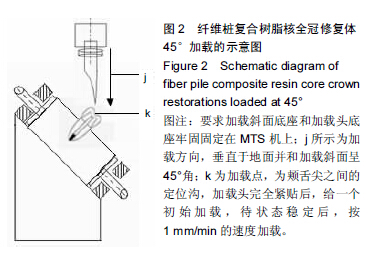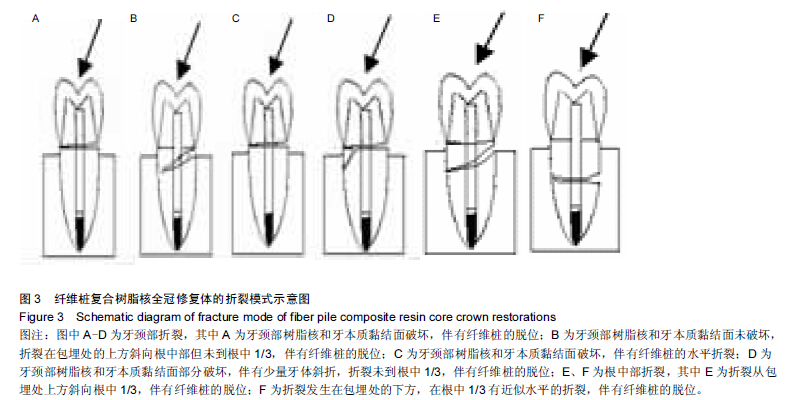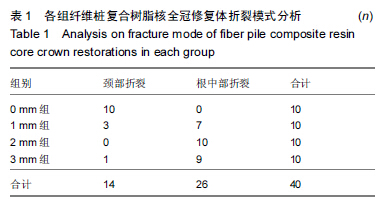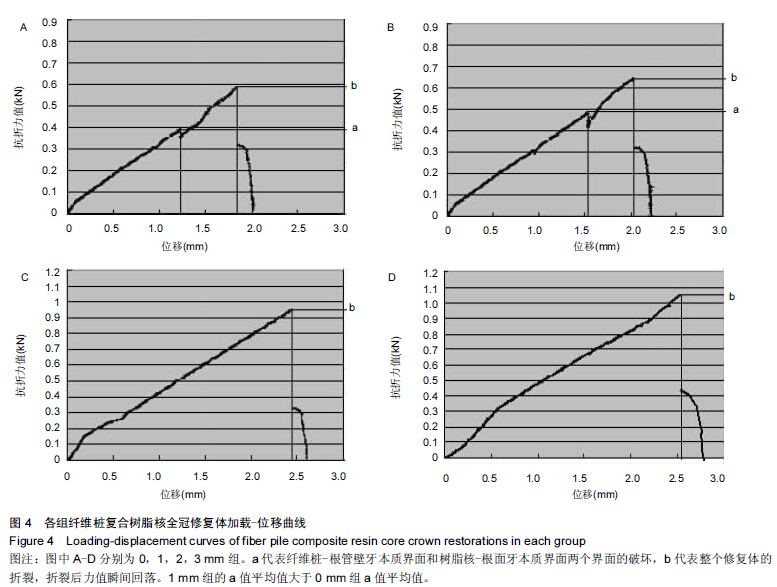[1] Mangold JT,Kern M.Influence of glass-fiber posts on the fracture resistance and failure pattern of endodontically treated premolars with varying substance loss: an in vitro study.J Prosthet Dent.2011;105(6):387-393.
[2] Santini MF,Wandscher V,Amaral M,et al.Mechanical fatigue cycling on teeth restored with fiber posts: impact of coronal grooves and diameter of glass fiber post on fracture resistance.Minerva Stomatol.2010;60(10):485-493.
[3] Hu C,Wang F,Yang H,et al.Preparation and characterisation of poly p-phenylene-2,6-benzobisoxazole fibre-reinforced resin matrix composite for endodontic post material: A preliminary study.J Dent.2014;42(12):1560-1568.
[4] Zogheib LV,Pereira JR,do Valle AL,et al. Fracture resistance of weakened roots restored with composite resin and glass fiber post. Braz Dent J.2008;19(4):329-333.
[5] Pereira JR,Valle AL,Shiratori FK,et al.Influence of intraradicular post and crown ferrule on the fracture strength of endodontically-treated teeth.Braz Dent J.2009;20(4): 297-302.
[6] Mangold JT,Kern M.Influence of glass-fiber posts on the fracture resistance and failure pattern of endodontically treated premolars with varying substance loss: an in vitro study.J Prosthet Dent.2011;105(6):387-393.
[7] Franco EB,Lins do Valle A,Pompéia Fraga de Almeida AL,et al.Fracture resistance of endodontically treated teeth restored with glass fiber posts of different lengths.J Prosthet Dent.2014; 111(1):30-34.
[8] Santos-Filho PC,Veríssimo C,Raposo LH,et al.Influence of ferrule, post system, and length on stress distribution of weakened root-filled teeth.J Endod.2014;40(11):1874-1878.
[9] Ona M,Wakabayashi N,Yamazaki T,et al.The influence of elastic modulus mismatch between tooth and post and core restorations on root fracture.Int Endod J.2013;46(1):47-52.
[10] Chang JW,Soo I,Cheung GS.Evaluation of fiber post-supported restorations under simulated occlusal loading.J Prosthet Dent.2012;108(3):158-164.
[11] Ba?aran EG,Ayna E,Halifeo?lu M.Microleakage of endodontically treated teeth restored with 3 different adhesive systems and 4 different fiber-reinforced posts.J Prosthet Dent. 2012;107(4):239-251.
[12] Valdivia AD,Raposo LH,Simamoto-Júnior PC,et al.The effect of fiber post presence and restorative technique on the biomechanical behavior of endodontically treated maxillary incisors: an in vitro study.J Prosthet Dent.2012;108(3): 147-157.
[13] do Valle AL,Pereira JR,Shiratori FK,et al.Comparison of the fracture resistance of endodontically-treated teeth restored with prefabricated post and composite resin core with different post lengths.J Appl Oral Sci.2007;15(1):29-32.
[14] Farina AP,Weber AL,Severo Bde P,et al.Effect of length post and remaining root tissue on fracture resistance of fibre posts relined with resin composite.J Oral Rehabil.2015;42(3): 202-208.
[15] 鲁洁,聂二民,刘克瑾,等.机械力学评价不同长度石英纤维桩的抗折强度[J].中国组织工程研究,2013.17(3):483-488.
[16] 亓莉莉,聂二民,陈霞云,等.石英纤维桩复合树脂核全冠修复无髓牙的疲劳抗性[J].中国组织工程研究与临床康复,2010,14(12): 2167-2170.
[17] Nie EM,Chen XY,Zhang CY,et al.Influence of masticatory fatigue on the fracture resistance of the pulpless teeth restored with quartz-fiber post-core and crown.2012;4(4): 218-220.
[18] Zhou L,Wang Q.Comparison of Fracture Resistance between Cast Posts and Fiber Posts: A Meta-analysis of Literature.J Endod.2013;39(1):11-15.
[19] Ni CW,Chang CH,Chen TY,et al.A multiparametric evaluation of post-restored teeth with simulated bone loss.J Mech Behav Biomed Mater.2011;4(3):322-330.
[20] Sarkis-Onofre R, Jacinto Rde C, Boscato N, et al. Cast metal vs. glass fibre posts: A randomized controlled trial with up to 3 years of follow up. J Dent. 2014;42(5):582-587.
[21] Pereira JR,Valle AL,Ghizoni JS,et al.Evaluation of push-out bond strength of four luting agents and SEM observation of the dentine/fibreglass bond interface.Int Endod J.2013;46(10): 982-992.
[22] Nova V,Karygianni L,Altenburger MJ,et al.Pull-out bond strength of a fibre-reinforced composite post system luted with self-adhesive resin cements.J Dent.2013;41(11): 1020-1026.
[23] Santos-Filho PC,Veríssimo C,Soares PV,et al.Influence of Ferrule, Post System, and Length on Biomechanical Behavior of Endodontically Treated Anterior Teeth.J Endod.2014;40(1): 119-123.
[24] Juloski J,Apicella D,Ferrari M.The effect of ferrule height on stress distribution within a tooth restored with fibre posts and ceramic crown: A finite element analysis. Dent Mater.2014; 30(12):1304-1315.
[25] Juloski J,Radovic I,Goracci C,et al.Ferrule effect: a literature review. J Endod.2012;38(1):11-19.
[26] Schmitter M,Lippenberger S,Rues S,et al.Fracture resistance of incisor teeth restored using fibre-reinforced posts and threaded metal posts: effect of post length, location, pretreatment and cementation of the final restoration. Int Endod J.2010;43(5):436-442.
[27] Balkenhol M,Rupf S,Laufersweiler I,et al.Failure analysis and survival rate of post and core restorations under cyclic loading. Int Endod J.2011;44(10):926-937.




